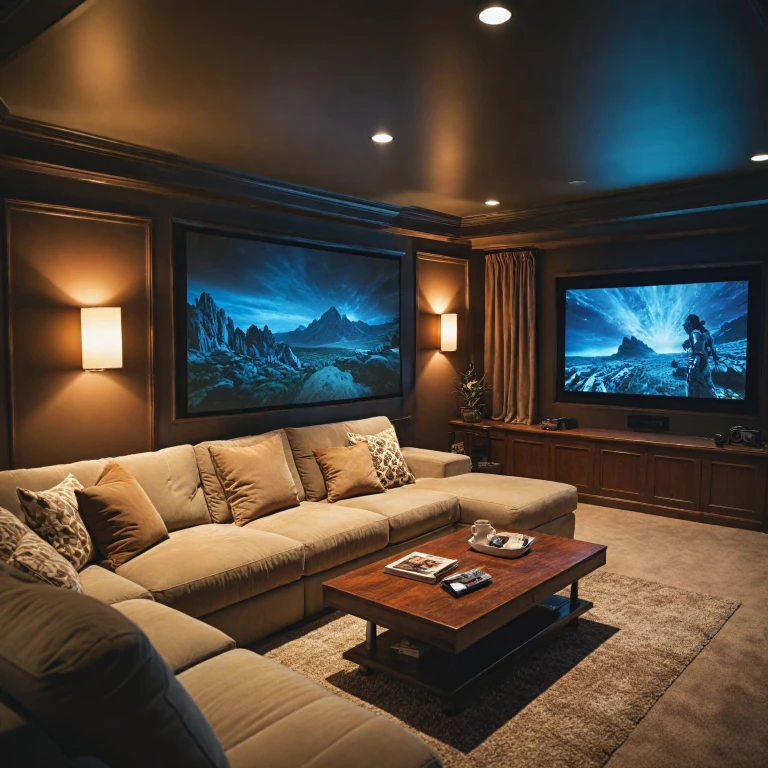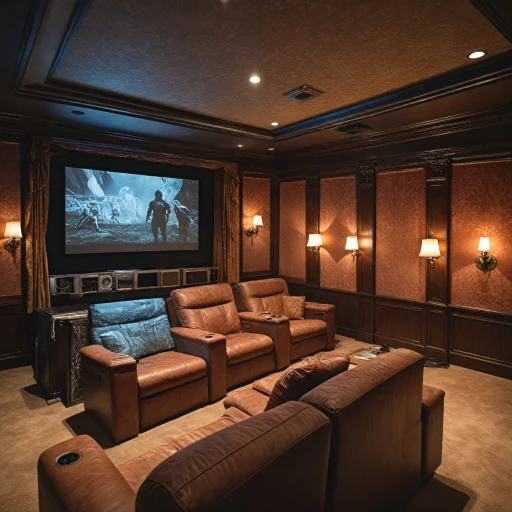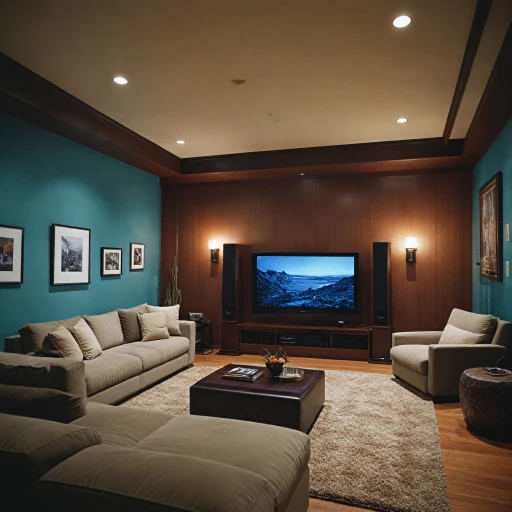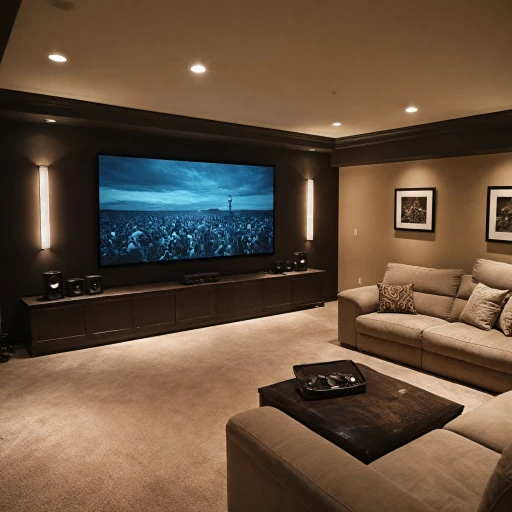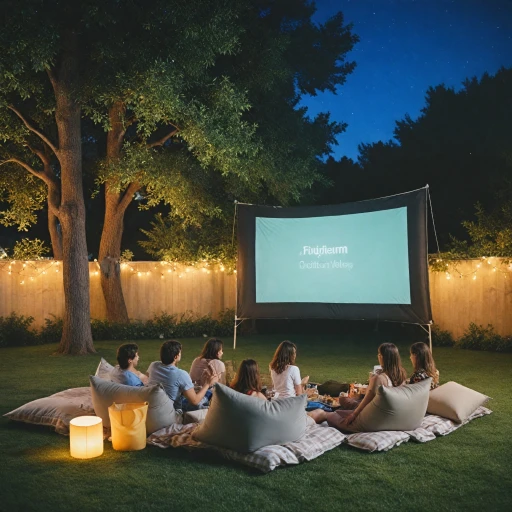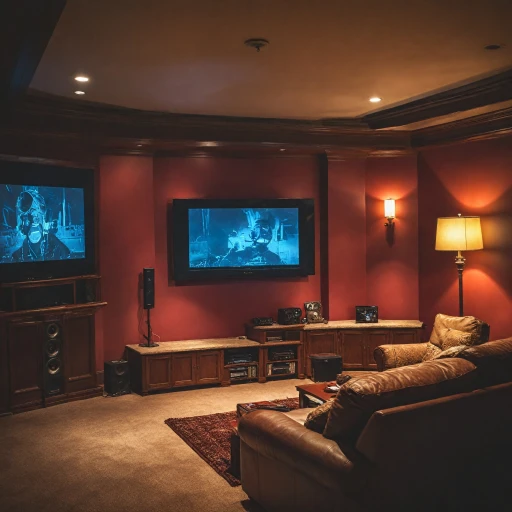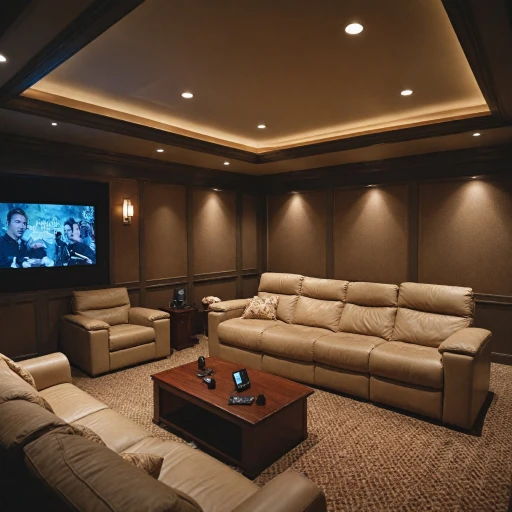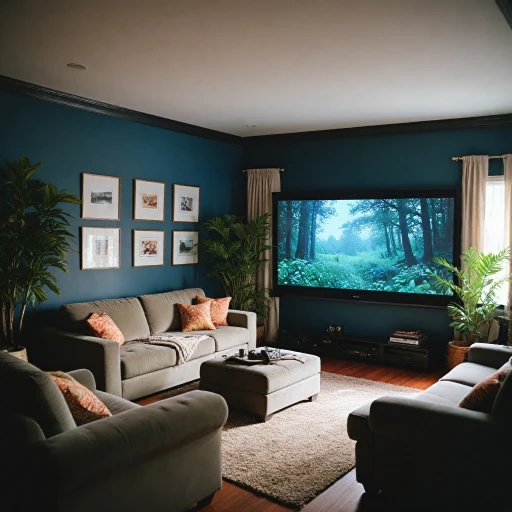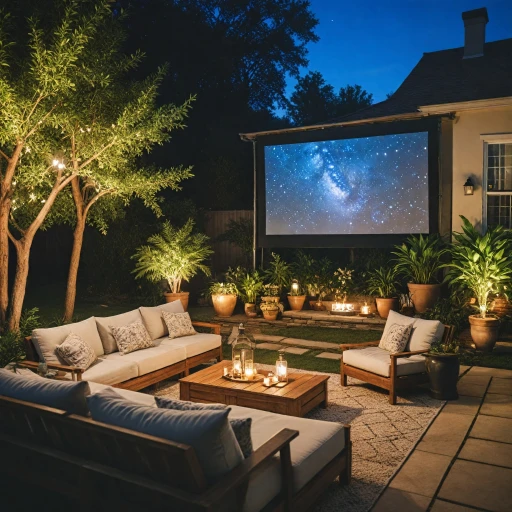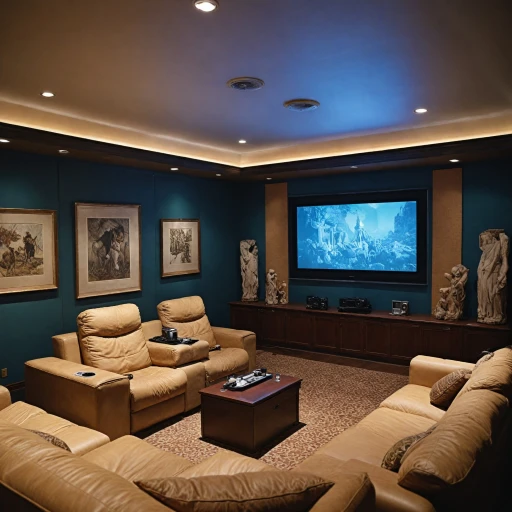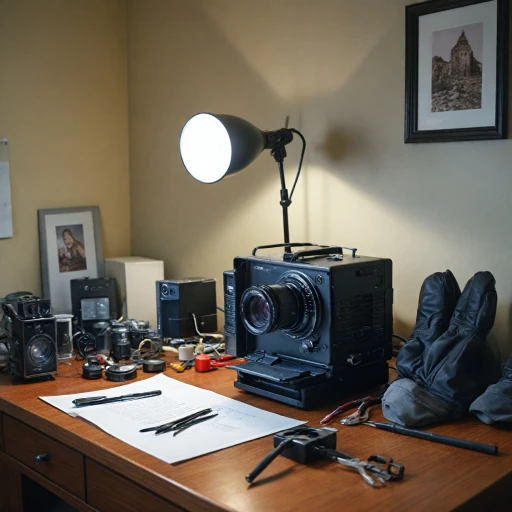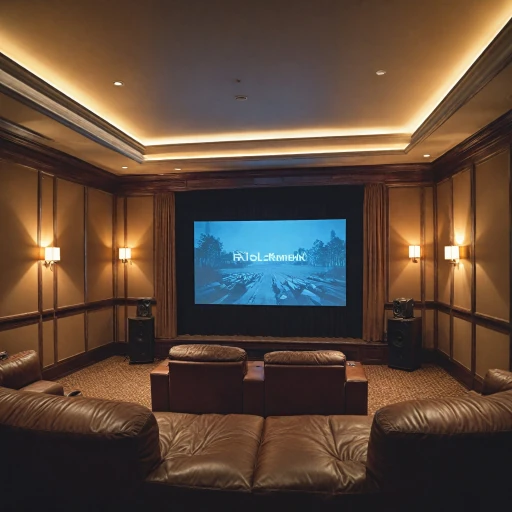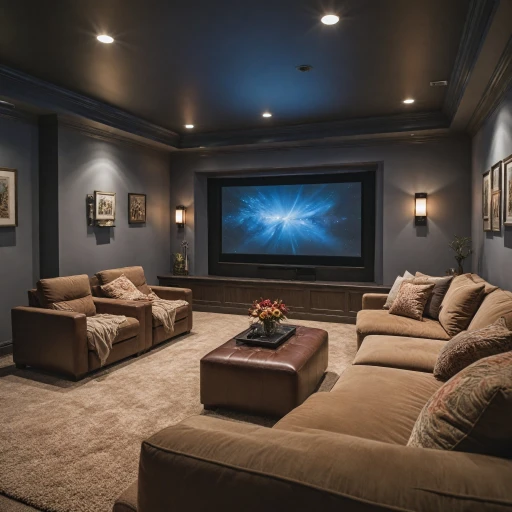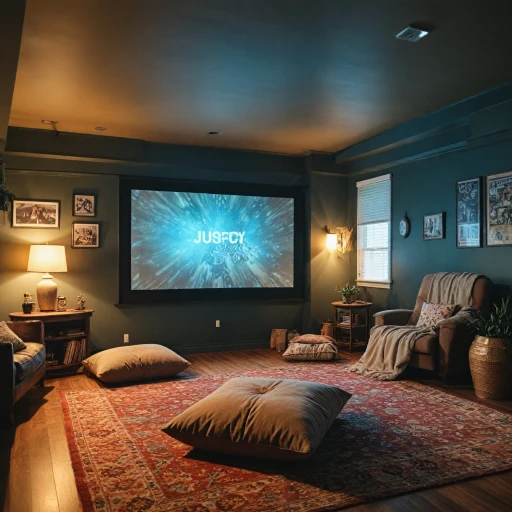
Understanding Screen Sizes and Viewing Distance
Finding the Optimal Screen Size and Viewing Distance
When selecting a 120-inch projection screen for your home theater, it's crucial to consider the relationship between screen size and viewing distance. The right balance ensures you're not straining your eyes or missing out on details. Generally, the ideal viewing distance is about 1.5 to 2.5 times the screen's diagonal size. So, for a 120-inch screen size, sitting at a distance of approximately 15 to 20 feet can provide the most immersive experience. Understanding the importance of screen size in relation to your room's layout is essential. If your space is limited, you might explore alternatives like portable projector screens or mounting the screen on the wall or ceiling. This flexibility allows for optimal projector placement and diverse mount types. It's also worth noting how viewing distance can affect your choice of screen material and gain. A matte white screen surface, for example, offers a more uniform reflection and is often favored for indoor viewing. However, if your setup will also function as an outdoor cinema, other considerations, such as weather-resistant materials, might be needed. Here's a helpful guide on choosing the best outdoor projector screens to ensure versatile usage. Evaluating the fixed or portable nature of your setup can enhance the overall aesthetic of your home theater, and investing in components like fixed frame projector screens or elite screens can significantly elevate your cinematic experience.Material Matters: Selecting the Right Screen Fabric
Choosing the Right Screen Fabric for Optimal Viewing
When it comes to creating the perfect home theater, selecting the right screen fabric is crucial. The material of your projection screen can significantly impact the quality of the image, affecting brightness, color accuracy, and viewing angles. Here’s what you need to know to make an informed decision.
Understanding Screen Gain and Its Impact
Screen gain is a measure of how much light a screen reflects back to the viewer. A higher gain means a brighter image, which can be beneficial in rooms with some ambient light. However, it can also lead to hotspots, where parts of the image appear brighter than others. For most home theaters, a gain of 1.0 to 1.3 is ideal, providing a balanced image without compromising quality.
Material Options: Matte White vs. Specialty Fabrics
- Matte White: This is the most common choice for home theater screens. It offers a neutral color balance and wide viewing angles, making it suitable for various projector types, including laser projectors.
- Specialty Fabrics: These include acoustically transparent screens, which allow sound to pass through, and ambient light rejecting screens, which are designed for rooms with more light. Consider these options if your setup requires specific features.
Fixed Frame vs. Portable Screens
Deciding between a fixed frame and a portable projector screen depends on your space and usage. Fixed frame screens are ideal for dedicated home theaters, offering a sleek, professional look. Portable screens, on the other hand, provide flexibility for indoor and outdoor use, though they may not offer the same level of image stability.
Considerations for Rear Projection
If you’re considering a rear projection setup, ensure your screen fabric is compatible. Rear projection screens are designed to allow light to pass through from the back, providing a unique viewing experience. This setup can be beneficial if you have space constraints or want to hide the projector.
For more detailed insights on enhancing your viewing experience, consider exploring this guide on roll-up projector screens.
Aspect Ratios: What You Need to Know
The Importance of Choosing the Right Aspect Ratio
When it comes to setting up your 120-inch projector screen, understanding aspect ratios is crucial for ensuring the ideal viewing experience. Aspect ratios define the proportional relationship between the width and height of your screen, with the most common for home theaters being 16:9 and 4:3. Selecting the appropriate aspect ratio depends on your typical video content and the type of projectors you plan to use.
For instance, modern movies and television are predominantly formatted in 16:9, making this aspect ratio optimal for contemporary content. A 16:9 projection screen provides a widescreen experience that is especially suitable for today’s video projection. On the other hand, a 4:3 aspect ratio could be ideal for more traditional formats and standard definition broadcasts.
Whether using elite projectors laser or standard projectors, matching the frame of your screen to your content’s aspect ratio prevents unnecessary letterboxing or pillarboxing, thus maximizing the screen size and enhancing your viewing experience. Additionally, consider if you need a versatile screen that supports both front and rear projection offerings, in case you’re interested in rearranging the setup for different viewing preferences.
Deciding between a fixed frame or portable projector option will also influence your aspect ratio choice. Fixed frame projectors, for instance, are excellent for permanently dedicated home theater rooms where a consistent aspect ratio is preferred.
Understanding and choosing the right aspect ratio is not just about fitting your picture onto the screen—it is about optimizing your entire home theater viewing experience. For further insights into enhancing your home theater experience, you may find it beneficial to explore optimal sound solutions to complement your visual setup.
Installation Tips for Your 120-Inch Screen
Optimizing Your Space for Screen Setup
When it comes to installing a 120-inch projector screen, a well-thought-out setup can vastly enhance your home theater experience. Here's what you need to consider:- Wall or Ceiling Installation: Decide whether you'll be mounting your screen on a wall or hanging it from the ceiling. A fixed frame projector screen is typically mounted to a wall, offering a stable viewing surface with a sleek look. If you're opting for a ceiling mount, ensure that the projection screen hangs securely and that your projector (whether it's a laser projector or a standard model) is aligned effectively.
- Frame Integrity: Choose a sturdy frame, essential for ensuring that the screen remains taut. A well-constructed frame will hold the screen material flat and true over time, preventing sagging that can distort your image.
- Projector Placement: It's crucial to position your projector correctly, whether mounted on a ceiling or placed on a shelf or table. This ensures optimal alignment with the screen. Consider the mount type and projector's throw distance, especially if using portable projector models for indoor or outdoor settings. Check that your projector screens align perfectly with the screen size and aspect ratio you've chosen.
- Screen Gain and Material Considerations: The screen's gain, indicating its reflectivity, is critical. For varied lighting conditions in your home theater, select a screen with appropriate gain. A matte white screen is versatile, delivering vivid images in most environments, while items like elite screens might offer different materials suited for both front rear projection settings.
- Accommodating Cables and Power: Plan for audio-visual connections and power outlets. Routing cables through walls or maintaining discretion with a dedicated rack can keep your space organized. Ensure ready access for adjustments and implementing terms conditions for the array of devices connected to your system.
Maintenance and Care for Long-Lasting Performance
Ensure Longevity with Proper Screen Care
When you've invested in a 120-inch projection screen for your home theater, maintaining it is crucial for sustaining the quality of your viewing experience. Regular maintenance not only ensures that the image quality remains optimal but also prolongs the life of the screen.
Firstly, the material of your screen dictates the specific care it requires. Whether you have a matte white or a high-gain screen, always adhere to the manufacturer's guidelines. For instance, elite screens made from special fabrics can be sensitive to certain cleaning chemicals.
Here are some general cleaning tips for your fixed frame or portable projector screen:
- Dust Regularly: Use a soft, lint-free cloth to gently remove dust from the surface. Avoid using abrasive materials that could scratch or damage the screen.
- Spot Clean Stains: In case of smudges or stains, a solution of water and mild soap can be used. Make sure to wipe in a gentle, circular motion and use a clean cloth to dry immediately.
- Avoid Direct Sunlight: Whenever possible, keep your screen away from direct sunlight, especially if it's a portable item used outdoors, to prevent fading and material degradation.
- Check the Frame: For fixed frame screens, ensure that the frame and mount type are secure. Regularly check for any loosening of the frame or projector mount, which can affect the projection alignment.
Furthermore, if you're using retractable screens, proper handling during retraction and extension is vital. Avoid pulling too hard to prevent strain on the mechanism. If your screen is used in both indoor and outdoor settings, adjust its maintenance routine accordingly, as exposure to elements like rain or dust may require extra care.
Regular inspection of all parts related to the screen, such as the frame projector components and any ceiling or wall mounts, is recommended. Ensure everything is secure and in place to prevent accidents or damage.
Finally, understanding the terms and conditions related to your screen's warranty and return policy can be beneficial. This knowledge can save hassle in case of manufacturer defects or shipping damages. It’s always a good idea to have your purchase receipts and documentation at hand to simplify any contact with customer service regarding return policy or repairs.
Budget Considerations and Value for Money
Cost-Effective Strategies for Selecting Your Projector Screen
Choosing a 120-inch projector screen for your home theater does not necessarily mean overspending. There are several ways to balance budget constraints while ensuring a high-quality viewing experience.
- Consider Material and Screen Fabric: Opt for matte white projector screens to benefit from optimal color reproduction. While elite screens may offer premium features, fixed frame screens can provide a balance between quality and cost.
- Exploring Brands and Series: Evaluate various series offered by reputable brands like Elite Screens. A popular choice is the Elite Screens' fixed frame projector screens, well-known for their durable construction and performance without breaking the bank.
- Understand the Aspect Ratio: Depending on your preferred content, you might opt for a more economical option that suits your projector's aspect ratio. This ensures the screen complements your current projection setup without unnecessary expenses on adjustments.
- Budget-Conscious Installation: Consider the screens' indoor and outdoor compatibility to maximize your usage. Rear projection or ceiling mount type installations can provide versatile solutions at a lower total cost.
- Factor in Return Policies and Customer Support: Understand the terms and conditions, return policy, and contact options of the potential purchase. An ideal choice would cover shipping and offer a satisfactory return policy, offering a safety net should the product not meet expectations.
By judiciously assessing these variables, you can ensure an optimal projection screen that aligns with your financial constraints while still delivering excellent entertainment value. Always remember, a higher price does not always equate to superior performance.
